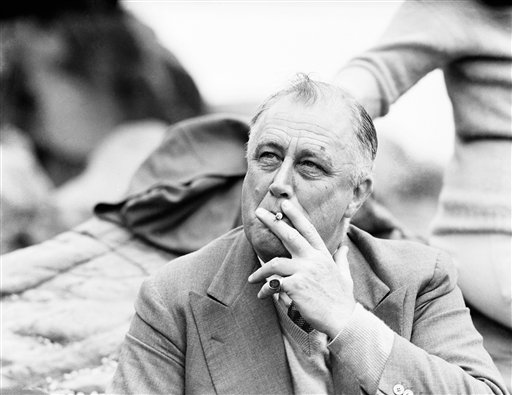John Emerson has a very good article that was promoted to the front-page at Open Left about why the Democratic Party is the way that it is. It has a lot of good history and it’s all basically accurate. It’s a little heavy on the intellectual developments of the mid-twentieth century, though, and too light on everything else. It’s still worth a read even if I think it misses most of what makes the Democratic Party the way it is, but it covers a lot of ground.
It starts from the place that so much progressive analysis starts, which is that there was a Golden Age of progressivism within the Democratic Party during the first two terms of Franklin Roosevelt’s presidency that has been lost, and then proceeds to try to explain what went wrong and how to get back to Shangri-La. I’ve always found the premise of these arguments to be mildly irritating. That’s because I don’t believe there ever was a progressive heyday.
Emerson begins:
The Democratic Party established itself in more or less its present form roughly between 1945 and 1955. The Civil Rights and anti-war movements of the sixties severely challenged the new party orthodoxy, but after 1972 (when many of the pros abandoned McGovern) the old guard took over again. The DLC takeover in 1988 moved the party still further to the right, but the foundations for an anti-populist, anti-progressive Democratic Party were laid immediately after WWII.
We can see from the dates that he’s willing to include FDR’s third term within the Golden Age, but not really.
A couple of weeks ago I described how the congressional progressives had at first been the New Deal’s biggest supporters, but went into opposition after 1937, so that the New Deal coalition was replaced by the old Grover Cleveland Democratic Party (the South and the urban machines) plus the unions. After 1937 the impending world war (which most Progressives opposed) increasingly dominated politics, and once the war had begun it trumped all domestic concerns, so that the Congressional role became rather limited and the progressives were marginalized.
So, he’s pretty much restricting himself to a Golden Age of 1933-1937. That’s a pretty brief period of time to hold up as the standard by which all subsequent ages should be judged. But, it’s true that in that brief period the interests of progressives and the interests of the Democratic Party were better aligned than at any time since. It’s also true that the onset of the war permanently changed American politics and the Democratic Party.
The most important permanent changes were related to dealing with the trauma of the second world war in thirty years, the unleashing of atomic energy, the emergence of communism as a global ideology with real power, and the real need to come up with answers to prevent a resumption of conflict, including a repeat of instigators like economic warfare between states. Probably nothing was more important than the Bretton Woods conference that set up the economic framework for the post-war era under American leadership. It was at this conference, in 1944, that America (under Democratic leadership) took over responsibility for monetary policy and assured that the Democratic Party could never again hope to rule as a majority as the antagonist of Wall Street.
It’s true, as Emerson describes, that all kinds of intellectual firepower was put to use to justify this change. But, just as with the responsibility of the Democrats to build a permanent military-industrial complex to deal with an atomic age, they had a responsibility to impose order on international markets to prevent the kind of chaos that occurred between the wars.
These twin responsibilities shaped the modern Democratic Party. And even though the Democrats after Truman lost the White House more than they won it, they controlled Congress almost uninterrupted up until 1995.
But, for me, this history does more to explain why America is the way that it is than to explain why the modern Democratic Party is the way that it is. That is because America developed in the post-war era by the Democratic Party’s design. They are inseparable. The Democratic Party was America all the way through to Reagan.
The progressive wing of the party didn’t die. But it could do nothing about economic or foreign policy. It had its successes on social issues. Progressives won battle after battle to extend rights to blacks, to women, to gays, and for religious minorities. But they made no ground on changing the ultimate power structures of American society, especially in how that power was projected overseas.
America’s elite took responsibility for the really complex stuff and for a long time the small people were content and rewarded for giving them their trust. All of that started to break down in the late 1960’s, and that’s when the Democratic Party began to break up as the party of American power.
The modern Democratic Party is not remotely similar to the party of FDR’s day, which had no responsibility for global economic policy or assuring that we have the preeminent military in the world. FDR’s party was dominated by segregationists. Today’s party is majority-minority. What’s happening is that the post-war consensus on matters both economic and international is breaking down and the base of the Democratic Party is becoming more old-school progressive. Ordinarily, the elites response would be to flee for shelter in the Republican Party, but they don’t agree (and never have) about the way the Democrats crafted that post-war consensus. So, there is no safe haven for the elites to run to.
The last time this happened was when this cycle began, back in 1933.
